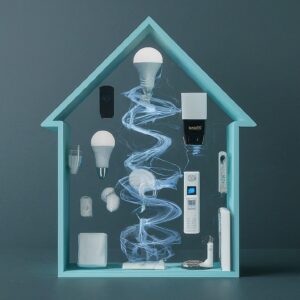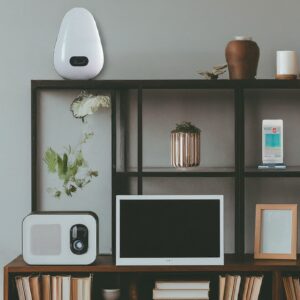
In the ever-evolving landscape of smart home technology, one of the key considerations for enthusiasts and beginners alike is understanding the various protocols that enable seamless connectivity between devices. From Zigbee to Z-Wave, Wi-Fi to Bluetooth, each protocol comes with its own set of strengths and limitations. In this comprehensive guide, we’ll delve into the world of smart home protocols, shedding light on their intricacies and helping you make informed decisions for your smart home setup.
Zigbee
Ah, Zigbee, the unsung hero of the smart home world! This wireless protocol operates on low power consumption, making it perfect for battery-operated devices like sensors and smart locks. With its mesh networking capabilities, Zigbee devices can communicate with each other, extending the range and reliability of your smart home network. Plus, its open standard nature ensures interoperability between different manufacturers’ products, giving you the freedom to mix and match to your heart’s content.
Z-Wave
If Zigbee is the unsung hero, then Z-Wave is the smooth operator of the smart home arena. Developed specifically for home automation, Z-Wave boasts impressive range and reliability, thanks to its mesh network topology. With over 2000 certified products and counting, Z-Wave offers a wide range of devices, from light switches to thermostats, all seamlessly interoperable within the Z-Wave ecosystem. Plus, its low power consumption and frequency-hopping technology ensure minimal interference and maximum performance. Z-wave devices tend to be more expensive than its rivals and you do need to be mindful of which region the device is configured for.
Z-Wave operates on different frequency bands or regions around the world to avoid interference with other wireless devices and comply with regulatory requirements. Here are the main Z-Wave frequency bands or regions:
- 868.42 MHz: Used primarily in Europe, including countries like the UK, Germany, France, and Spain.
- 908.42 MHz: Used in North America, including the United States, Canada, and Mexico.
- 919.82 MHz: Used in some countries in Asia and Oceania, such as Australia and New Zealand.
WiFi
Ah, good ol’ Wi-Fi, the workhorse of the modern world! While not specifically designed for smart home applications, Wi-Fi offers unparalleled speed and compatibility, making it a popular choice for smart home devices. From smart speakers to security cameras, Wi-Fi-enabled devices can connect directly to your home network, allowing for easy setup and integration with other devices. However, Wi-Fi’s high power consumption and potential for network congestion may not be ideal for battery-operated devices or large-scale deployments.
Bluetooth
Who could forget Bluetooth, the ubiquitous wireless technology found in everything from smartphones to toothbrushes! While not as common in the smart home space as Zigbee or Z-Wave, Bluetooth has its own set of advantages, including low cost, widespread adoption, and compatibility with a wide range of devices. With the introduction of Bluetooth Low Energy (BLE), smart home devices can now operate on minimal power, making them ideal for battery-operated sensors and beacons.
Thread
A relative newcomer to the smart home scene, Thread is gaining traction as the go-to protocol for smart home networking. Developed by the Thread Group, which includes industry giants like Google, Apple, and Samsung, Thread offers robust security, low power consumption, and seamless interoperability between devices. With its mesh networking capabilities and support for IPv6, Thread promises to revolutionize the way we connect and control our smart home devices.
Matter
Matter is a higher-level interoperability standard that defines how smart home devices should interact and interoperate with each other, regardless of the underlying communication protocol. Matter builds upon existing protocols like Thread, Wi-Fi, and Ethernet, among others, to ensure compatibility and ease of use for consumers. It aims to create a unified ecosystem where different smart home devices can work together seamlessly, regardless of the manufacturer or communication protocol. There’s been a lot of promise offered by Matter, however it’s been slow to gain traction and adoption. As of March 2024, it hasn’t set the smart home world on fire, but who knows what’s in store. Even if it were possible, I wouldn’t be filling my home full of Matter-based devices at this stage.

Conclusion
In conclusion, smart home protocols play a crucial role in enabling seamless connectivity and interoperability between devices. Whether you’re a Zigbee zealot, a Z-Wave aficionado, or a Wi-Fi warrior, understanding the strengths and limitations of each protocol will help you build a smart home ecosystem that meets your needs and preferences. So go forth, dear reader, and embark on your journey to smart home nirvana with confidence and clarity!
